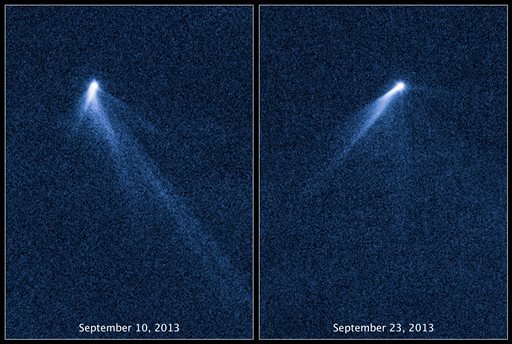Hubble spots strange asteroid with 6 tails of dust
Thursday, November 7, 2013
CAPE CANAVERAL, Fla. - This is one strange asteroid.
The Hubble Space Telescope has discovered a six-tailed asteroid in the asteroid belt between the orbits of Mars and Jupiter. Scientists say they've never seen anything like it. Incredibly, the comet-like tails change shape as the asteroid sheds dust. The streams have occurred over several months.
A research team led by the University of California, Los Angeles, believes the asteroid, designated P/2013 P5, is rotating so much that its surface is flying apart. It's believed to be a fragment of a larger asteroid damaged in a collision 200 million years ago.
Scientists using the Pan-STARRS telescope in Hawaii spotted the asteroid in August. Hubble picked out all the tails in September.
The discovery is described in this week's issue of Astrophysical Journal Letters.

